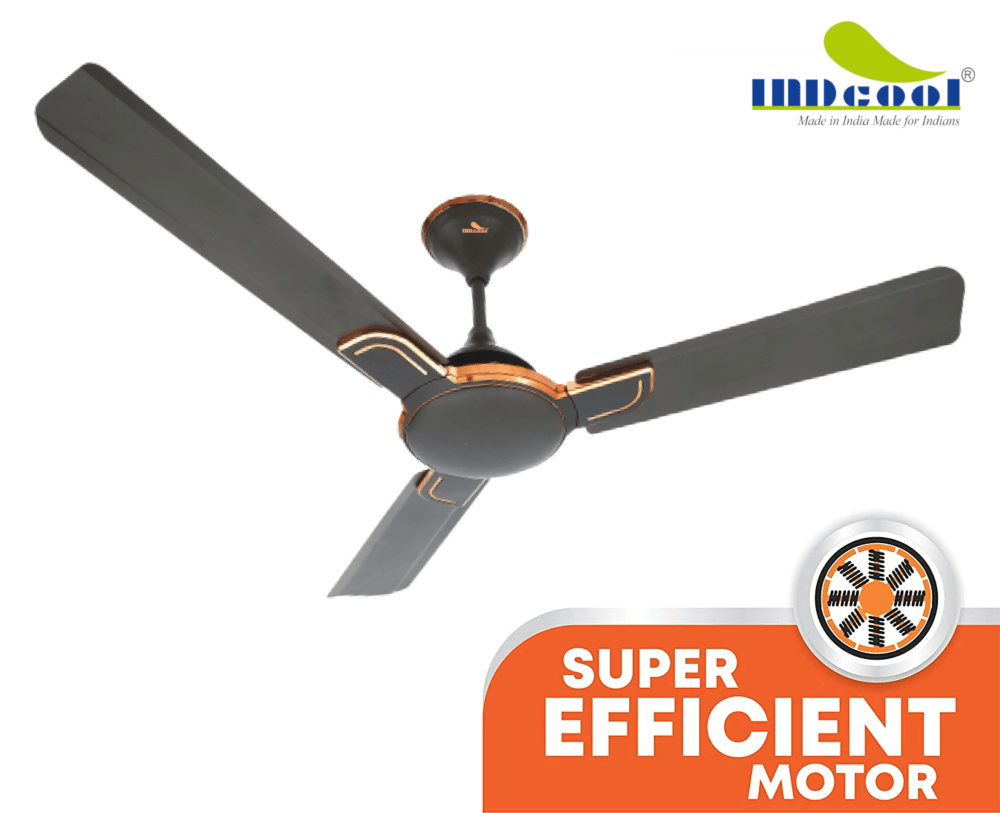
One of the most popular household items in Indian homes is a ceiling fan, which is why we take them for granted as we take pleasure in the cool, comforting air on a hot, sunny day. How many of you were aware that choosing the proper ceiling fan also requires choosing the appropriate number of blades? All the information you require on the distinction between 3- and 4-blade ceiling fans is provided here.
Blades of a ceiling fan
Contrary to popular belief, ceiling fan blades have purposes other than simply enhancing the fan’s appearance. An important part of creating air in the room is the motor-driven blades of the ceiling fan. The performance of the ceiling fan can be determined in part by the size and quantity of its blades.
The dispute over 3-blade vs. 4-blade ceiling fans and which one is ideal for your home is one of the most significant variables to consider. Consider this article to be your definitive reference to understanding the differences between 4- and 3-blade fans and assisting you in making the best decision.
3-Blade Fans
The most typical ceiling fan found in Indian homes is a three-blade model. Let’s look at a few of its advantage and drawbacks.

Benefits
- The weight is one of the main distinctions between this 3-blade fan and a 4-blade fan. The weight and rotational force of 3-blade ceiling fans are typically lower.
- Rapid air circulation is achieved because the motor’s resistance is reduced and the blades can revolve more quickly.
- The whole cost must be considered when comparing 3- and 4-blade fans. It goes without saying that 3-blade fans are less expensive than 4-blade fans.
- When compared to 4-blade ceiling fans, 3-blade models use significantly less electricity, saving you money on your monthly energy bill.
Drawbacks
- The fan can rotate at a higher speed thanks to its lightweight construction, but this increased speed also raises pressure, which generates a loud noise.
- Due to the smaller number of blades, a 3-bladed fan delivers less air.
4-Blade Fans
The most popular ceiling fan is one with four blades, which is utilised in nations with milder climates. Let’s look at a few of its benefits and drawbacks.
Benefits
- The movement is much slower but more steady due to the substantial weight and air resistance. Low noise is the end outcome of this.
- A 4-bladed fan will quietly move cool air across the room when used in conjunction with an air conditioner.
Drawbacks
- Cost-wise, 4-blade ceiling fans are more expensive than 3-blade models.
- The enormous load and resistance on the motor make it necessary to use more power to turn the blades. It uses more energy as a result, which raises your monthly electricity cost.
Which Ceiling Fan with 3 or 4 Blades Should You Pick?
Simply said, a 3-bladed fan will produce less air delivery due to the less number of blades, but will operate at a higher speed due to the reduced aerodynamic resistance. Choosing to get a 3-blade fan is the best move because the motor load is moderate and there won’t be any unwelcome noises. These are excellent choices for an Indian household because there is a larger need for high-speed fans.
On the other hand, a 4-bladed fan will provide more air because it has more blades, but it will do so at a slower pace because of the drag caused by the air resistance. Additionally, 4-blade fans could increase the motor load. Such fans make excellent choices for cooler regions where higher fan speeds are not necessary. Prior to choosing a ceiling fan, it is crucial to do your research.



Leave a Reply